|
|
This is the most expensive blog post I ever posted – it cost our plugin company over $2,000, and I’m not kidding nor exaggerating.
Since our Rating-Widget plugin is a “Service-ware” (software as a service, wrapped into a WordPress plugin), we always followed SaaS markets standards and offered a monthly plan, in addition to an annual plan. A few months ago, I decided to challenge our plugin’s pricing and try the “WordPress way” by removing the monthly subscription. Keeping only the annual and lifetime billing cycles.
The reasoning behind that call was that it should probably increase the customer’s lifetime value, and will generate more immediate revenues. In our case, instead of generating $8.99, we’ll get $95.88 upfront for every new customer.
We ran this pricing experiment for one week and saw a drastic fall in new customers. “Drastic” is an understatement – we lost 54% in our customer acquisition rate. Even though we have never seen such a huge fluctuation in customer acquisition, one week is too short of a period for any conclusions. We, therefore, decided to give it at least another week.
We ran an experiment trying to increase customer lifetime value & revenue. We failed miserably.
The second week was even worse! We observed a 61% drop in new customers compared to our new customers acquisition rate when we had the monthly plan. As much as I’m a big fan of a/b testing and giving it enough time to run, clearly, there was a negative effect in removing the monthly plan and I decided to get the monthly plan back.
After this test, I set to analyze the numbers, and the results were shocking. If you think about it, it should make sense that the number of new customers would go down, since it’s easier to send your hand to your wallet for $9 than for $96. But what doesn’t make sense at a first glance is that the total revenues went down.
I found out that the number of new customers that subscribe to our annual plan was lower by 47% (10 vs. 19) than what we usually get when we have the monthly billing cycle in place.
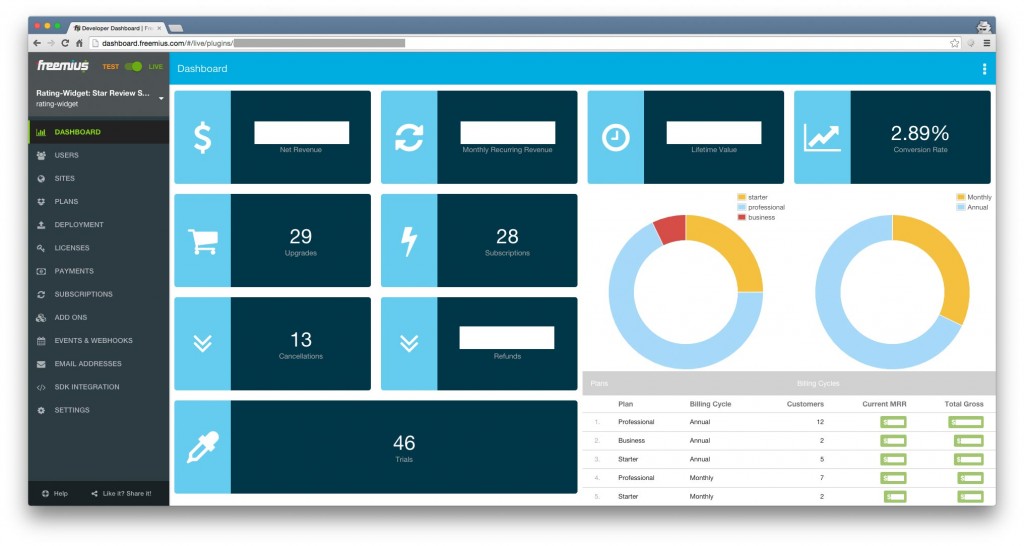
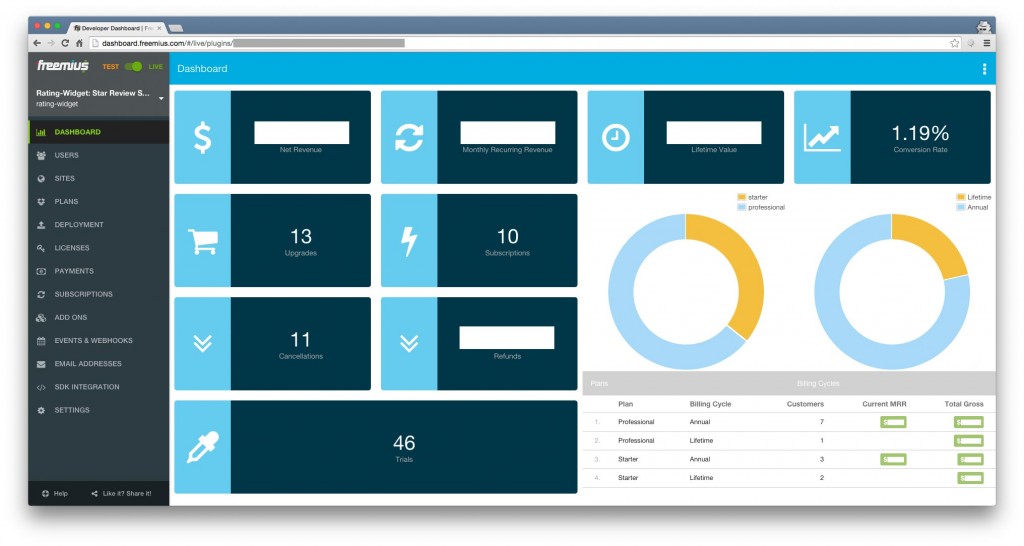
The bottom line here is that we generated less revenues from new customers in those two weeks than in any other two weeks in 2015.
Moreover, as a recurring revenues business, what matters at the end of the day is the LTV, churn rate, and customer acquisition rate. It doesn’t matter if the customer pays $9 this month or $95 right away. What matters is the LTV.
Yes, there’s a tiny-tiny chance that this change would slightly increase our lifetime value. But I’m not willing to continue this trial for a year. Two weeks were more than enough 🙂 Also, I doubt that the LTV will be doubled to recover the 50% decrease of new customers.
And Then – It Hit Me!
Trying to understand that phenomenon, I looked back on our pricing page and realized that without the monthly plan there’s no discount for the annual plan. And looking at our lifetime plans, the cheapest one is $150.
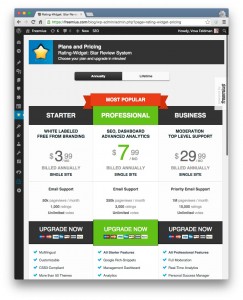
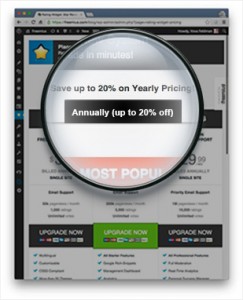
Then, I thought about Dan Ariely`s book discussing the decoy pricing concept, and it all started to make sense…
When talking about the decoy pricing model, also called the ‘asymmetric dominance effect’ – there are two offers:
- The first offer is priced low.
- The second offer is priced much higher and promises to include more.
Remember that our aim here is to attract the customer towards the higher-priced offer, in order to increase revenue. To help with that aim – simply introduce the decoy, offer #3, priced even higher than the 2nd offer, but with very similar features and value.
This decoy offer will drive the customer to seriously examine the option of going with offer #2 (the more expensive original offer, which now looks more inviting, and relatively cheaper).
With the more expensive decoy, a customer will look differently at your original high-priced offer.
It’s practically impossible to evaluate an annual plan vs. a lifetime plan since your potential customer can’t predict how long they will be using your plugin. On the other hand, it’s way easier to evaluate monthly vs. annual. If monthly > annual / 12, and the user plans to use the plugin for at least a year, it’s an easy call to make: the annual deal seems much more attractive.
Grab a free copy of our Cheat Sheet for
Selling Plugins and Themes
A growth roadmap with concise, actionable tips for every milestone of WordPress product development.

A Few Comments on Monthly Plans:
Is it for Me?
The answer is – It depends. Just a few weeks ago, I had some great discussions about monthly payments with a bunch of plugin business owners at PressNomics. One of them was Joe Guilmette from WP All Import. After talking with Joe, I realized that in order to decide whether the monthly billing cycle is for you or not, you need to ask yourself if your plugin provides continuous value, or is it a one-time thing.
Let me give you an example: if your plugin is an exit intent pop-up, every day that the plugin is active it continues to generate value for the site owner by capturing more leads. On the other hand, if your plugin is a migration plugin from Drupal to WordPress, then it’s a one-time thing. After the migration is done, the publisher doesn’t need the plugin anymore. Therefore, I would not try monthly pricing for a personal license in a migration plugin.
Having said that, I would try monthly pricing for an agency/freelancer/developer level plan since those are doing migrations all the time.
What people are thinking about paying on a monthly basis?
When I say people, I mean the buyers – site owners, freelancers & agencies. I’m NOT talking about what the plugin developers presume their buyers are thinking 🙂 Since I knew this post was coming for a while, when I met “website builders” at WordCamp Miami and PressNomics, I asked them a very simple question: “Would you prefer paying for a plugin $120 a year or $10 a month?”
The initial reaction to my question was an immediate distrust: “where’s the catch?”, but after I clarified there’s no catch, all four gave the same answer – “If those are my options, then I would prefer to go with the $10 / month option.” As a mathematician, I know that four samples are far from proving anything. Hence, I posted a short poll on the Advanced WordPress Facebook Group to crowd-source the data:
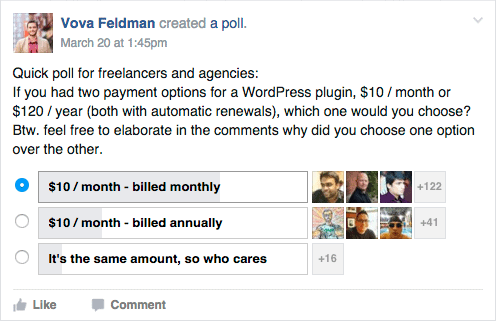
Over 120 people participated in the poll, and it received more than 40 comments. I’ll let the results do the talking: 7 out of 10 people prefer the monthly billing cycle.
7 out of 10 people prefer to pay monthly for WordPress plugins (out of 185 voters).
67.5% prefer to pay monthly.
23.7% prefer to pay annually.
8.6% don’t care.
The most common opinion of why monthly is preferred was that it gives the ability to test the waters, both from the product side, as well as the support provided to it.
Another interesting data point is that 40% of the comments (16 to be exact) highlighted the fact that they would only go for an annual plan if there’s a discount in place.
Some people thought that I’m asking for feedback on how to sell my plugin, and therefore provided their insights from the plugin developer’s point of view. Also, after analyzing the voters who chose the annual billing cycle over the monthly, ~20% of them were plugin developers, and I have a good feeling that some of them, subconsciously, voted as plugin business owners.
Here’s an example of a comment I received by James Tryon from WP Valet:
People will pay and leave after the first month.
James is absolutely right, and that’s exactly the next point I’m about to make.
Blocking Premium Features on License Expiration
If you decide to try the monthly billing cycle – make sure you block the premium features after license expiration.
You may think that it’s not the “WordPress way”. The fact that only a few developers provide a monthly plan does not mean it’s wrong. It may be wrong for your particular plugin, but it would be wrong not to give it a try.
In fact, the WordPress ecosystem is still immature from a business perspective, and the “WordPress way” is constantly changing. If you look 8 years back, no one had even thought about monetization. Back then, selling a plugin was a crime. If we look only 2 years back, very few “brave” plugin developers had the courage to do automatic renewals, and now it’s becoming the trend. The market is maturing, and there’s a very good reason why everywhere else outside of the WordPress ecosystem the common model is monthly subscriptions.
From our own experience, we NEVER received any complaint about blocking premium features on license expiration.
We have NEVER received any complaint about blocking premium features on license expiration.
You could claim that we are a service and not a product, but for the common WordPress user – we are just another WordPress plugin.
While I can’t guarantee that your users won’t complain about that – once you offer a monthly plan, it’s reasonable that you will want to protect your business and block the features right away if a user stops paying.
If you are using Freemius, there’s a one-click switch on the plans page to set that mode:
If you are using EDD you can purchase the Software Licensing Extension, and based on Josh Pollock’s words, you can hack it and make it work that way.
Monetizing with Support
If you only monetize with support, without any premium features, you should calculate your cost of a complicated ticket, and price the monthly plan with a healthy buffer on top of that cost.
When monetizing with support, the user will usually upgrade because of an issue he/she may be having with the product.
Food for thought
I already covered the enormous benefits of running monthly payments, the main one is the ability to build a sustainable and predictable business. Now, based on our experiment, offering both monthly and annual can push your plugin business to the next level by increasing your bottom line. Following the results of the poll, it’s clear that the majority of people prefer to pay on a monthly basis.
Compiling all this data altogether, it looks like selling WordPress plugins with monthly and annual billing cycles is a win-win for everyone.
Selling WordPress plugins with monthly and annual billing cycles is a win-win for everyone.
If you are still not convinced or ready to test the monthly plan, I would test adding an artificial discount. Something like: “Usually $150, today $100”. I noticed that ‘Banana Republic’ does it all the time and it seems to be working well for them, adding the “urgency” as another psychological element to the purchase decision.
Don’t get me wrong
I’m obviously not advising against such experiments and tests. On the contrary! I encourage you to constantly be performing creative tests (with pricing experiments, among other things), and see how you can make for a better product/experience/offering for your customers.
If you just follow market benchmarks and won’t take risks to challenge your business, your progress’ cap will always be the market pace.
Do you have an idea for an interesting pricing experiment? Have you made any creative A/B testing with your WordPress products? Do tell us about those in the comments area below.





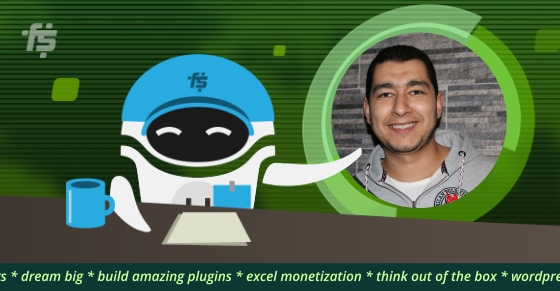

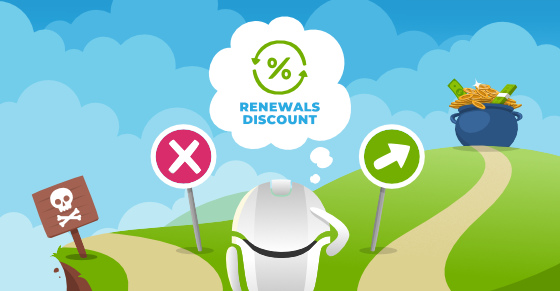

Great article Vova! I was one of the people that voted for the monthly plan. With no incentive to sign-up for a longer commitment, the lower risk option is to go monthly. Great reference to Dan Ariely's book too!
I need to reference his book for my membership site students!
Thanks Steve. Dan is my guru for pricing psychology.
Great read, thank you. Gave me a lot to think about
Nice write up Vova, a similar discussion to the one we had at PN4 as well.
But I'd caution that even your data aren't a clear indictment of monthly vs. annual in every case. I have several friends with SaaS that would say the exact opposite in their data.
What I see from this experiment is that your users aren't convinced of the benefits of buying annual over monthly. That could be for a number of reasons--they don't trust that you'll deliver on your service yet, they aren't sure if it's right for them, they don't have the money....any of those could be true.
A more interesting experiment would be to do this (preferably in the next 6-12 months). Instead of offering a straight annual vs. monthly, try offering monthly and then at later points, offer to do an annual plan upgrade (with an annual discount). This is a common SaaS tactic:
- Break your users into cohorts (30, 60 and 90 days after signup).
- Take the first cohort, run them through an email sequence asking them to signup for an annual plan vs. a monthly one, see what the conversion rates are (much less risky than just pulling plans altogether)
- Do the same with the next two cohorts as well
My theory is that you'll find higher conversion to annual upgrades once you get into 60 or 90 day periods because you'll have increased trust and confidence in your service over that time. The resistance you found may start melting away as the users engage with the product. You might also want to segment further by engagement, dropping out those who "aren't engaged" and I suspect you'll see even higher lift rates on that annual plan upgrade.
Food for thought.
Hey Dave, indeed we had this super-passionate conversation at PN4.
After speaking with over hundred WordPress plugin developers, there's a huge myth that monthly cannot work in the WordPress environment. As you read the results of our experiment, not only that it can work, it actually increases the bottom line.
My point with the poll was to show that the community is not against monthly payments like many developers think. And I think the results talk by themselves.
It's also important to clarify that I'm not encouraging to try monthly over annual, I'm just recommending to try supporting both. And yeah - if you'll provide an annual discount, it looks like many users will go for that anyways (and that's what we see with our plugin as well).
With regards to your experiment - it sounds great! And I don't see any contradiction to what our data has shown. Are you up for the challenge trying it with your plugin ;)
Thanks for the reply, Vova. Just so I'm clear--I don't think "monthly" is inherently bad for *anyone* and I'm certainly not saying it can't work in WP (obviously you, ManageWP, BackupBuddy and others prove that point very well), but I think that the resistance shown in your own experiment doesn't clearly say that monthly is a global panacea either. :) Not everyone can start charging monthly and make it work. Even Joe agrees with me on that one.
For my plugin, it's more clear that users get an "up front" value to it--My several years of data at this point show that people are fine buying into it at an up front price, and less interested in renewing over time. Either they abandon the project, they change their sites, or they are fine with it as is. Monthly pricing isn't something that would work well for my plugin per se. I think Freemius is different (and we had this debate at PN) because you're offering ongoing value with the addition of the churn service and such. Once someone installs a directory, that ongoing value isn't clear cut anymore (at least based on what I hear from my own users and my experience).
Definitely follow up on this in a bit and report on what you find. I think it would be interesting to know.
And just FYI, I'm working on something that *does* charge monthly for WP site users/owners, because I do see that as a pricing model that works better in the long run.
You said: "From our own experience, we NEVER received any complaint about blocking premium features on license expiration."
There are two things to consider here:
1) Maybe no one was still using the product at that point. That is, it can't expire if they already stopped using it. They don't complain because they don't care?
2) Similar to the previous point, the features your clawed back weren't even being used. Again, you can't be missing something if you're not using it. Unfortunately, that also means, the customer had paid for something they didn't need. Now consider point #1 in the context of "angry ripped-off" customer. :(
I've experienced the same thing with my plugin. Tried increasing the monthly subscription price to get more customers to choose the annual option and almost immediately my sales decreased. I've reverted this change and sales are increasing again.
Out of curiosity Bruno, what is your price point for the monthly? Do you offer annual upgrades after a few months of monthly payments in an email sequence?
Sure. Current monthly price is $5.99. That seems to be the preferred choice over an annual price of 49.99$. I don't have any other special options besides what Freemius already offers. Customers can eventually change their subscription as per what Freemius allows.
I think the monthly (or perhaps quarterly) subscription based model can be made to work for nearly any business that can muster up any type of going updates on a regular basis. It's all really the perception of the purchaser, and how they see their cash flow at that particular moment.
We run our sites using WP (I'm not a developer, just a decently capable 'installer') and we almost never buy yearly, even with the discount.
And I mean for everything - not just plugins. Our dashboard, mail service, etc, we prefer to pay on a monthly basis, even if it means we're spending a bit more over the long run.
I can't tell you how many lifetime this and lifetime that I have purchased in 20 years of working online, but I can tell you that a lifetime is usually much shorter than one would expect when it comes down to it.
We'd also much prefer that our plugin authors see a steady cash flow that incentivizes them to continue supporting their work, and its likely that monthly revenue stream is a good way to do that.
Thanks for pitching in some of your experience about the pricing topic.
Those are some interesting & valid considerations to be making mostly monthly based purchases, taking the plugin authors into consideration, as well.